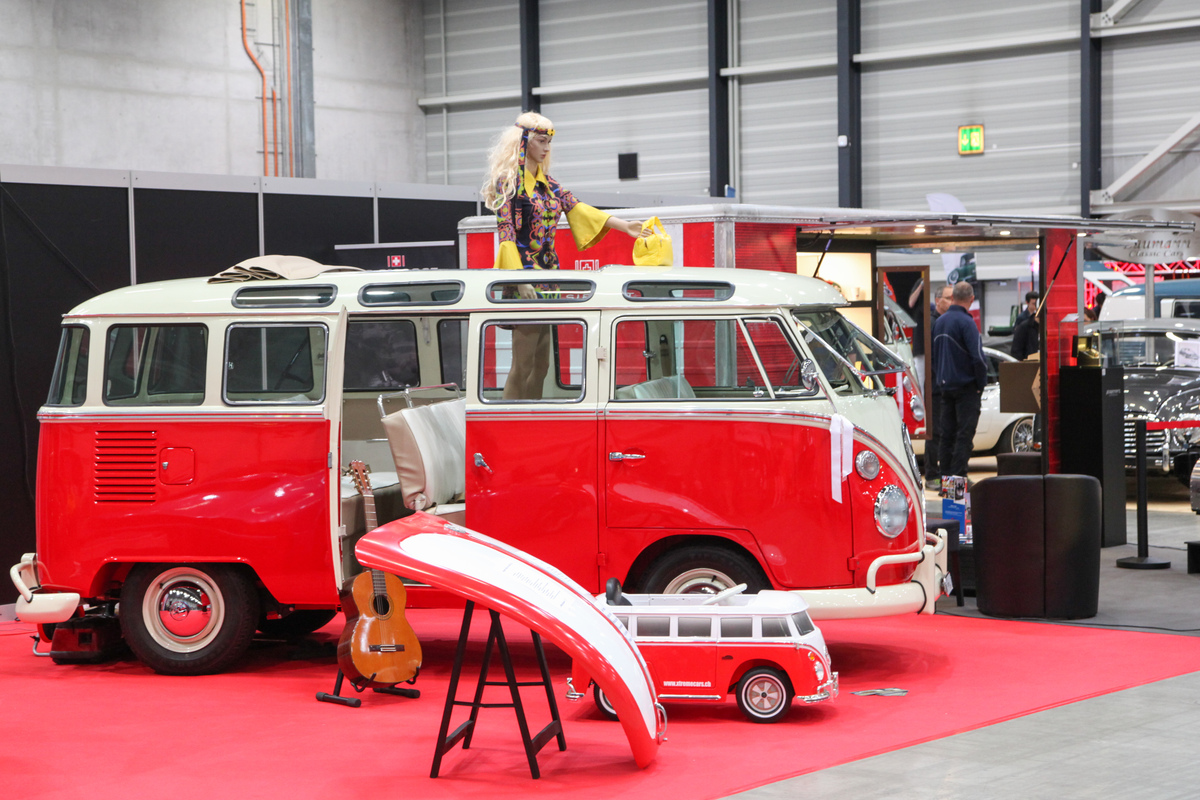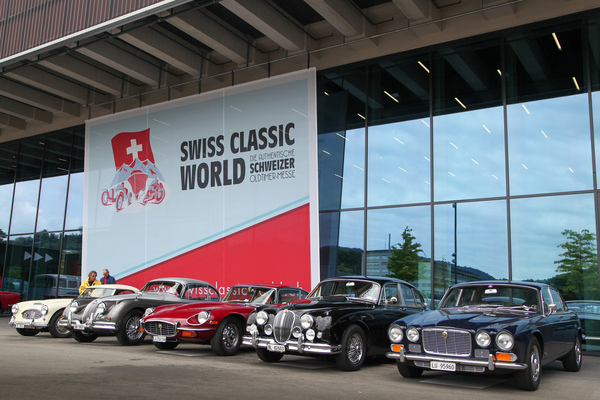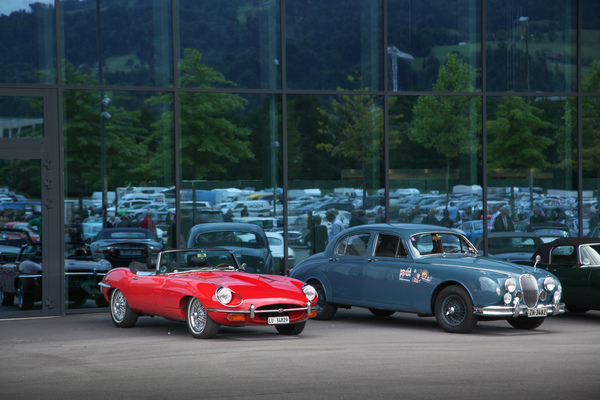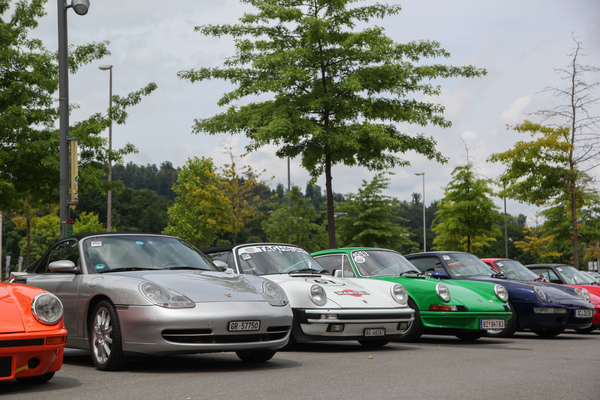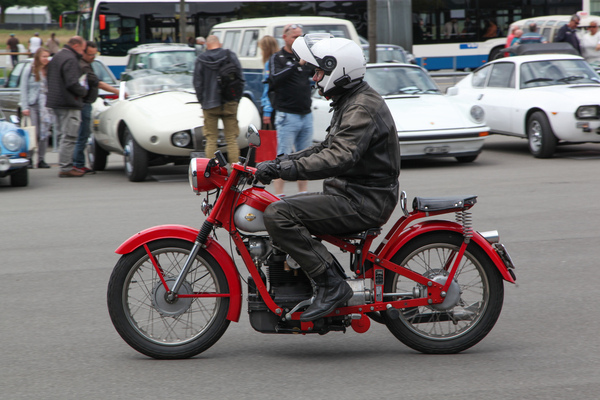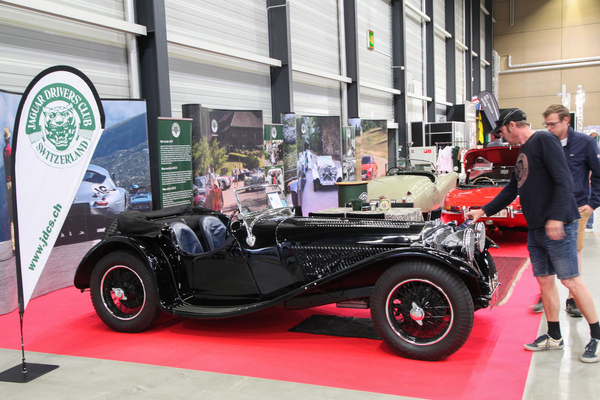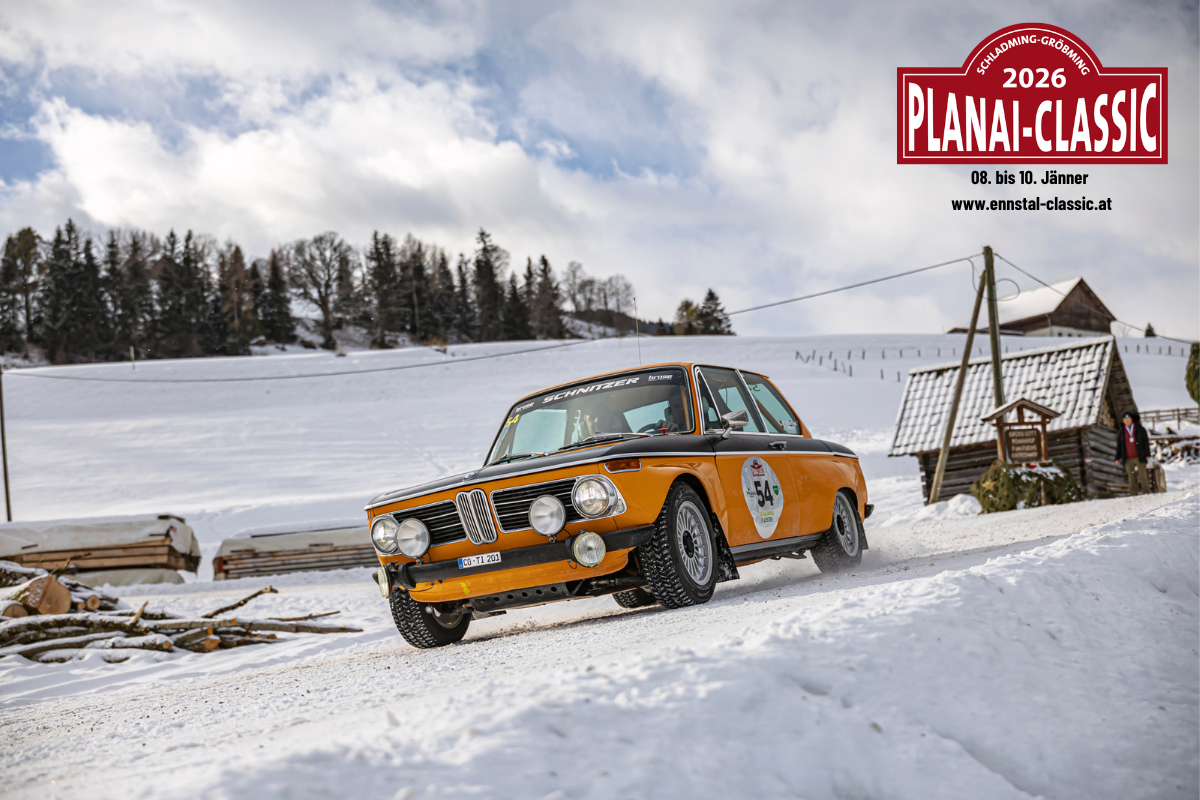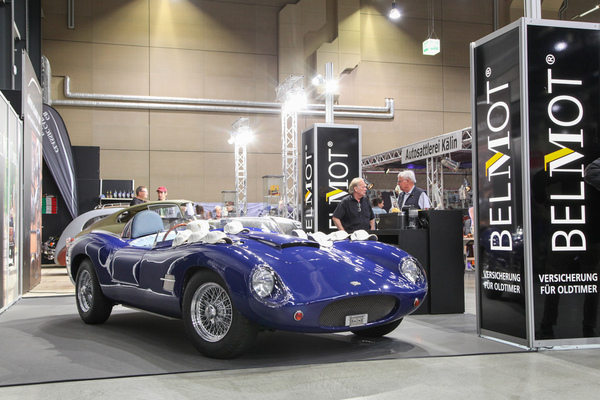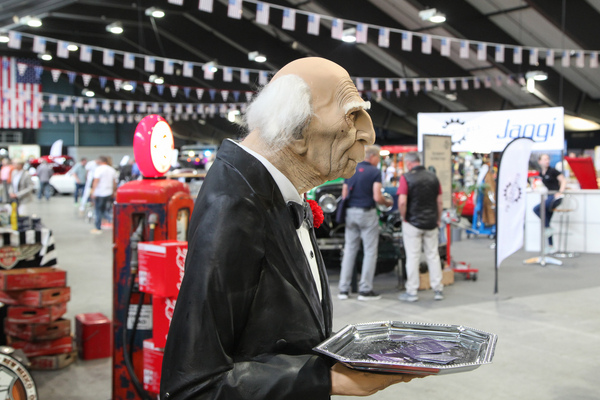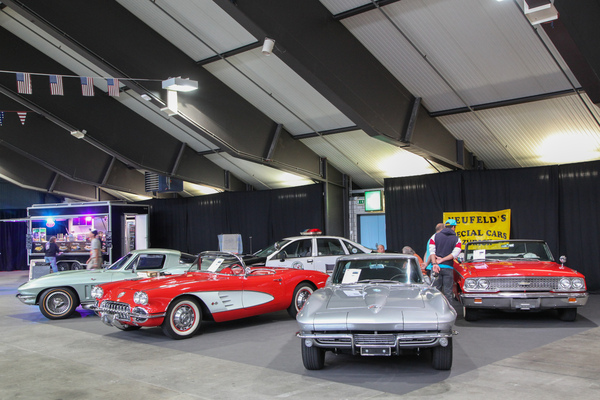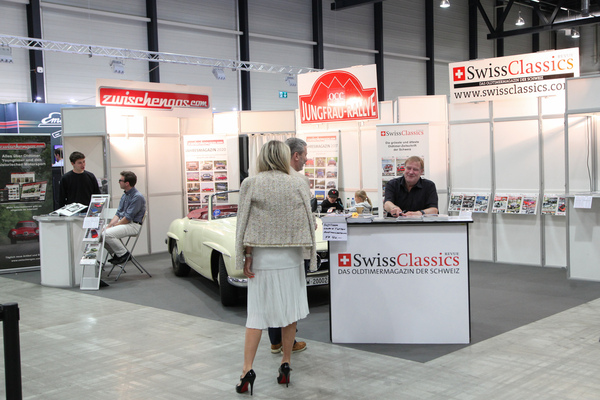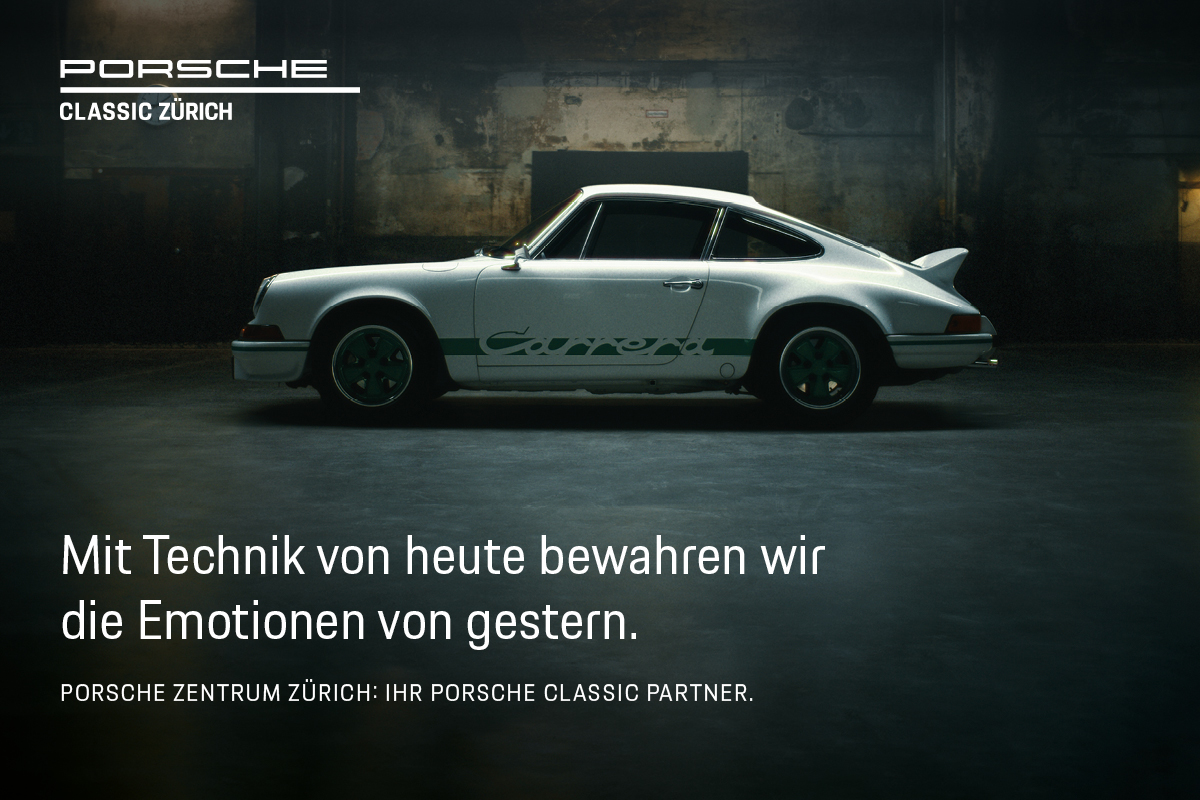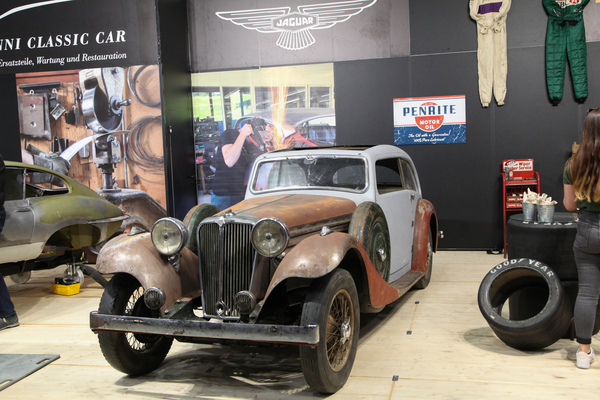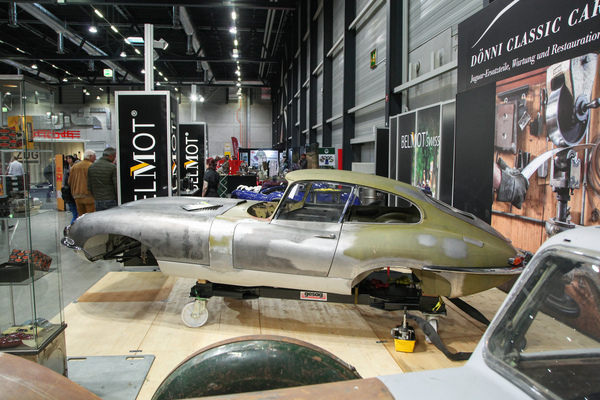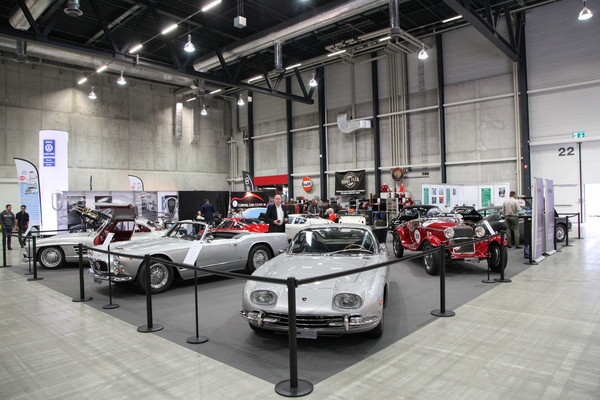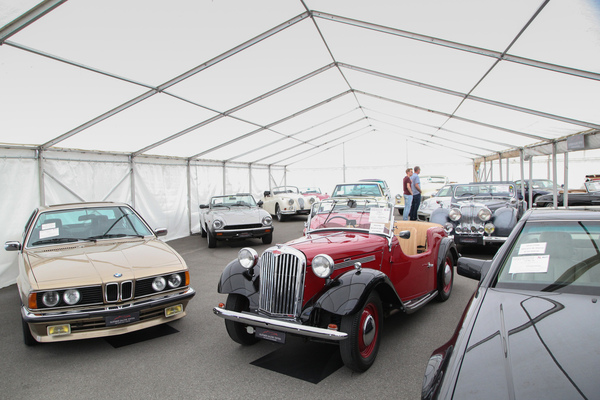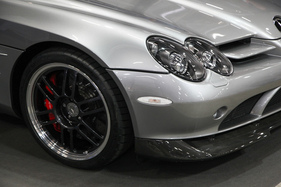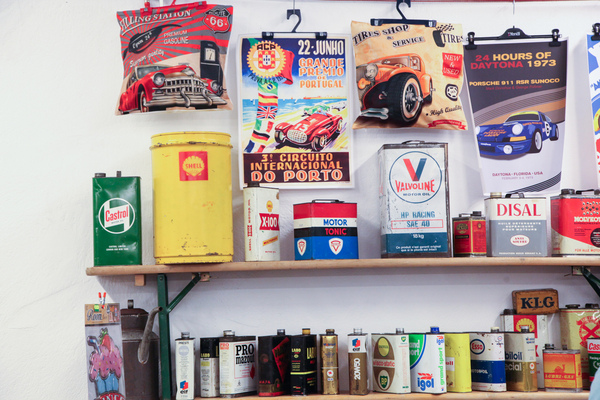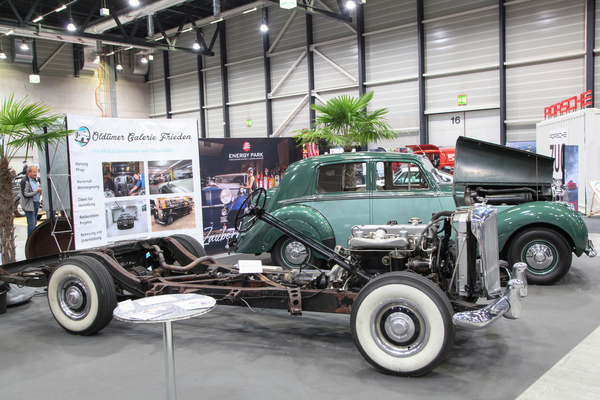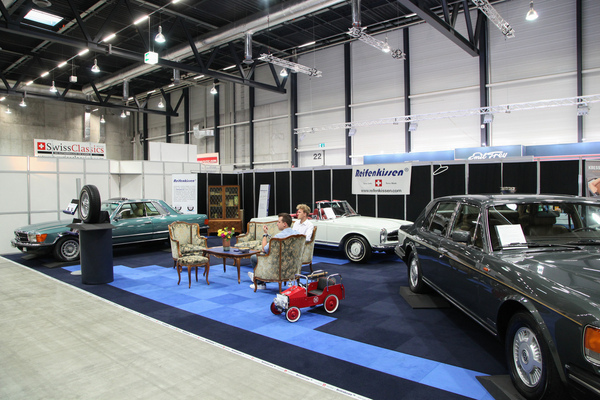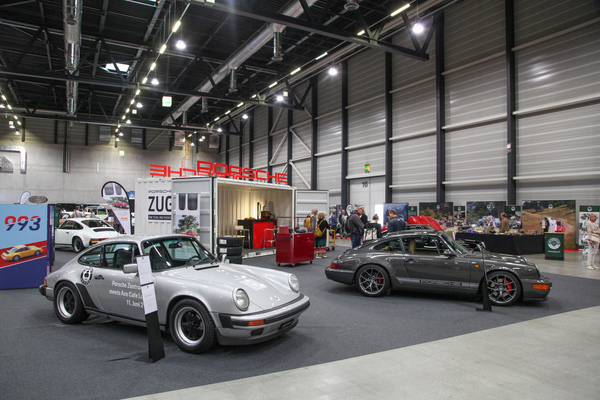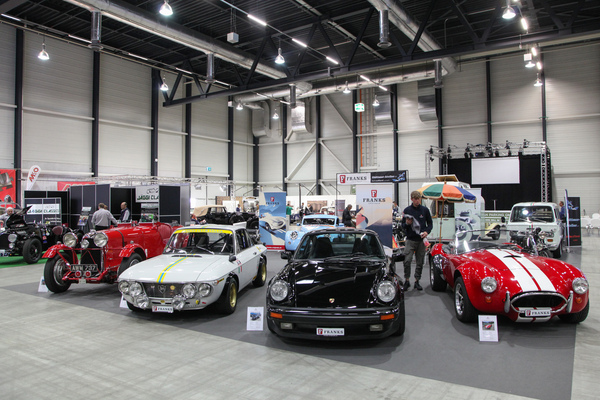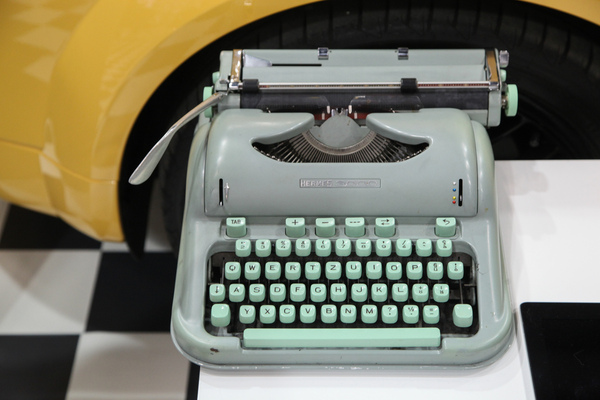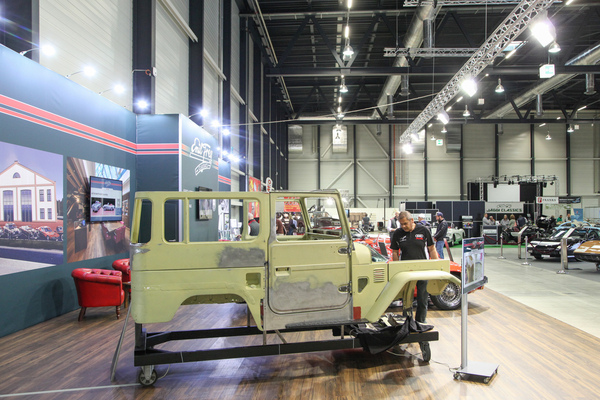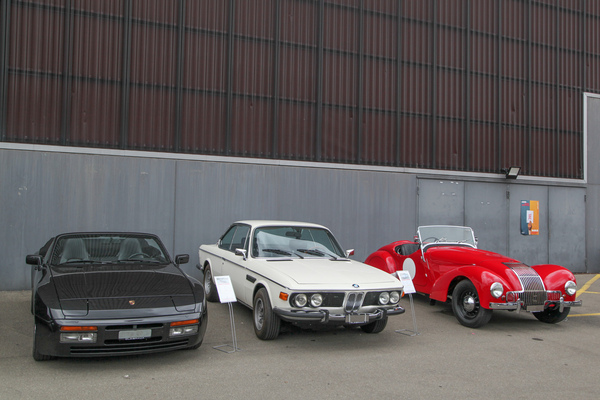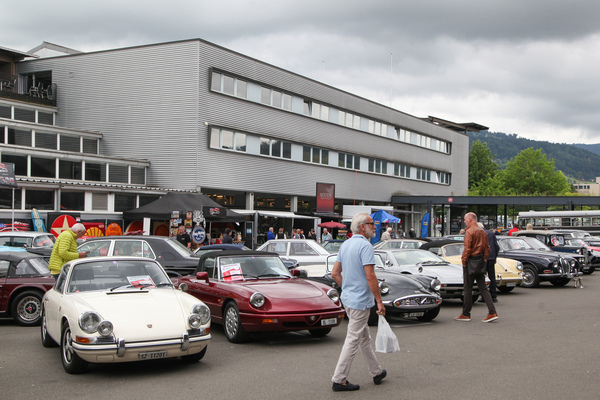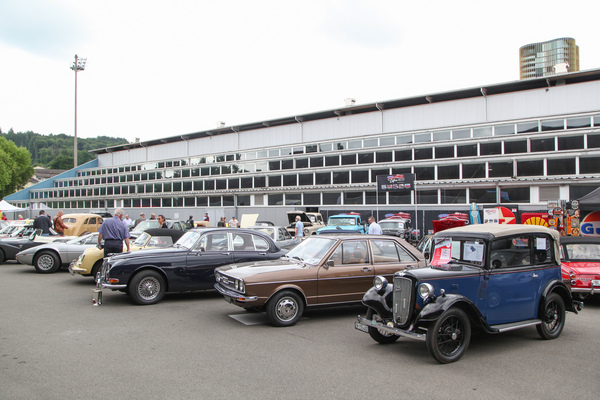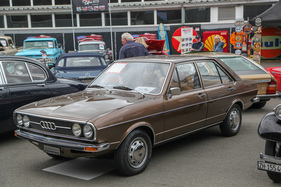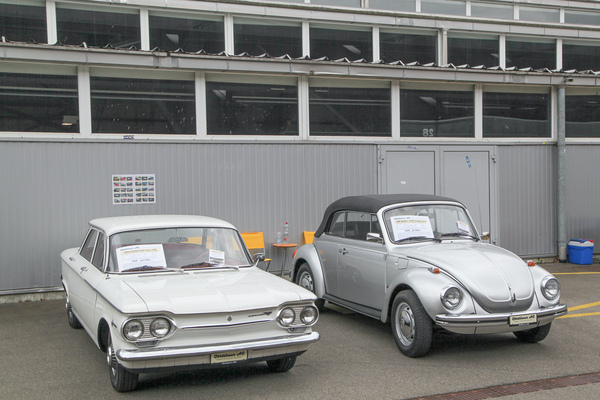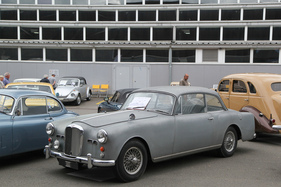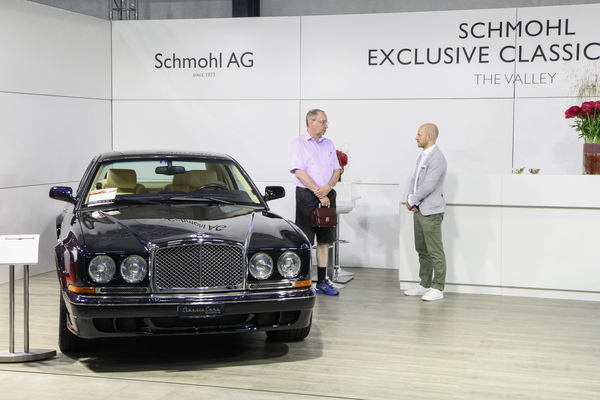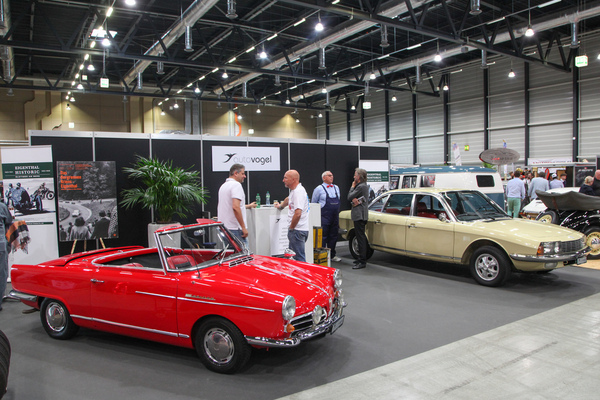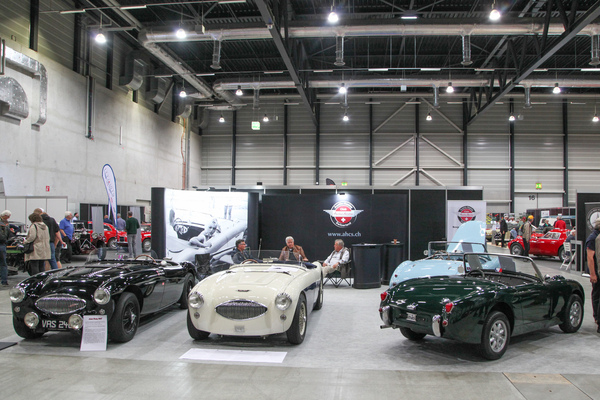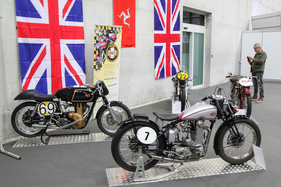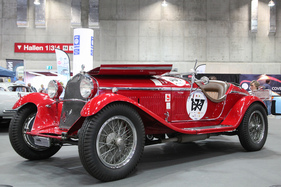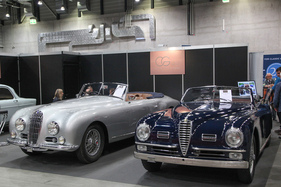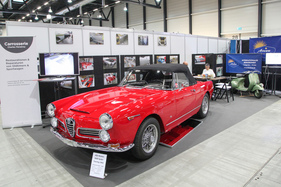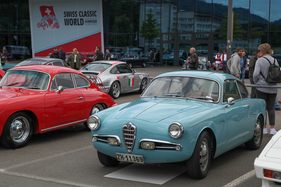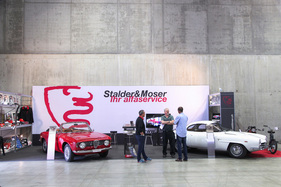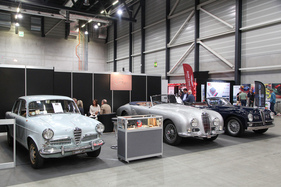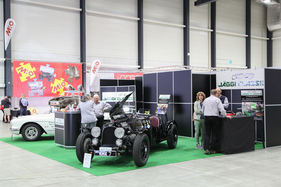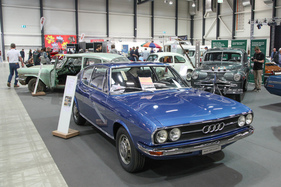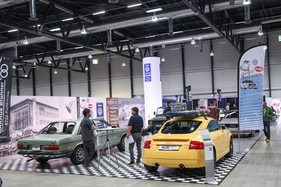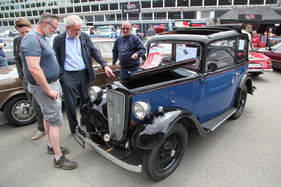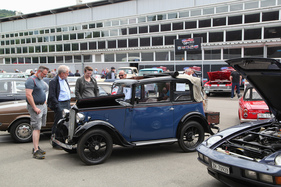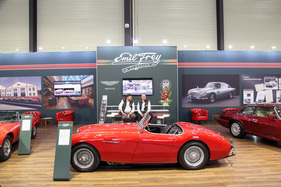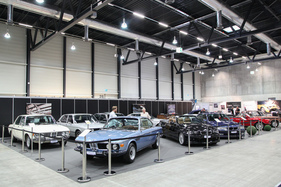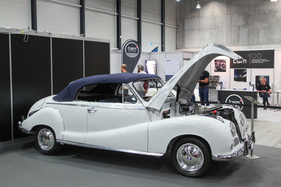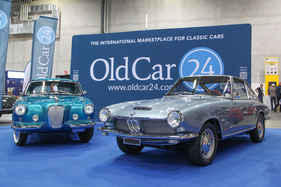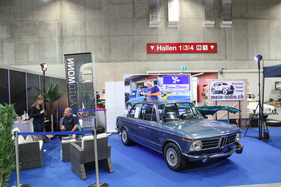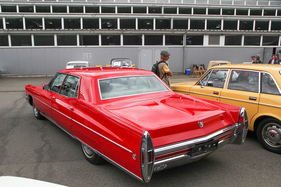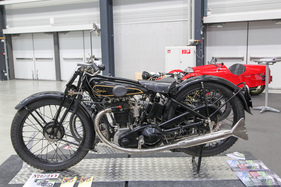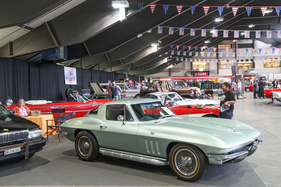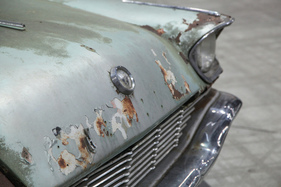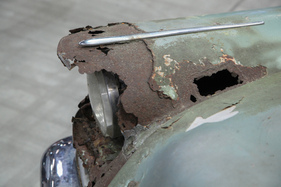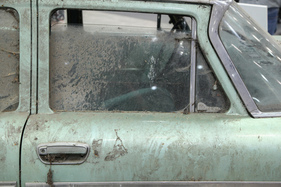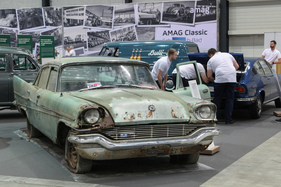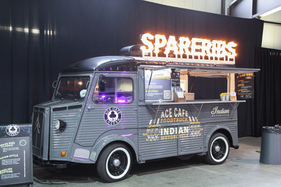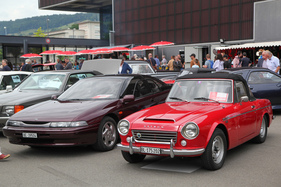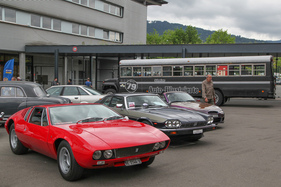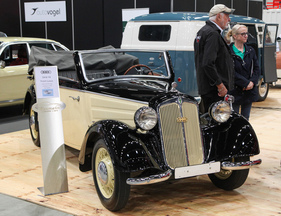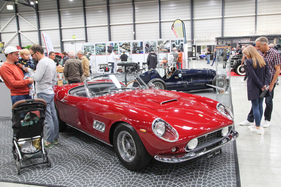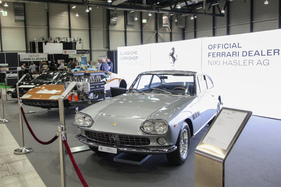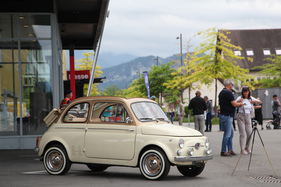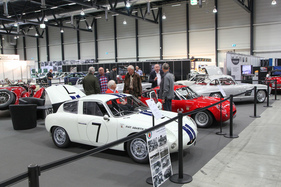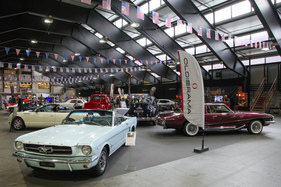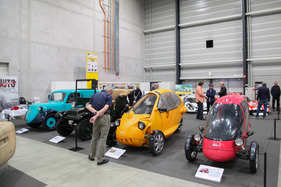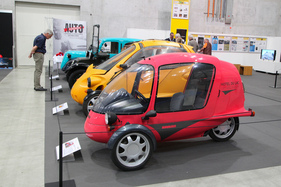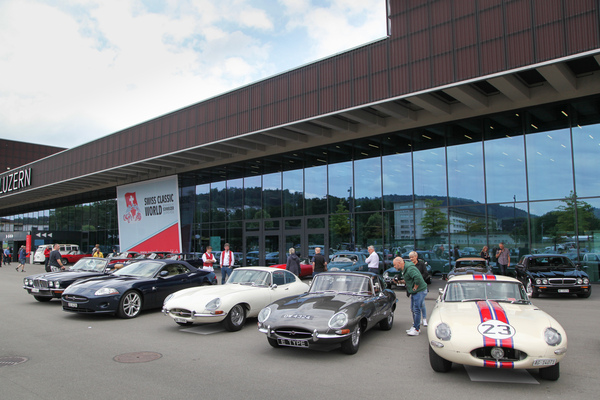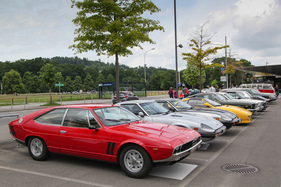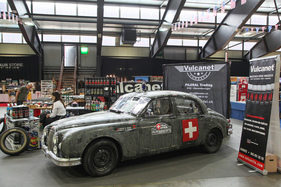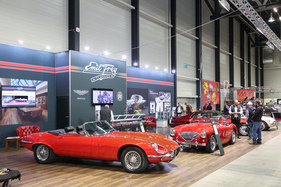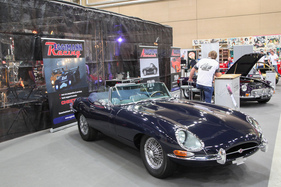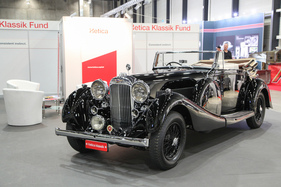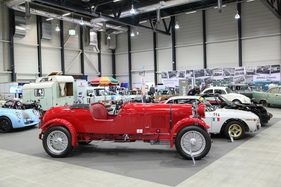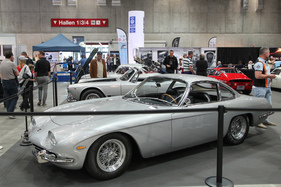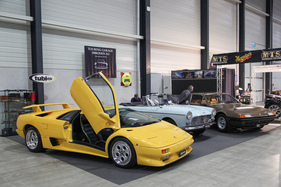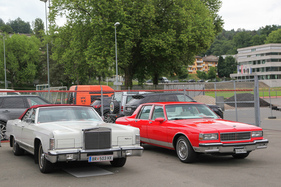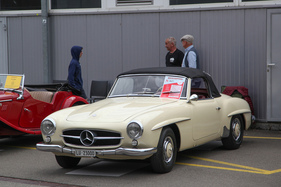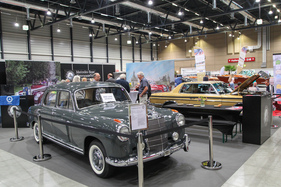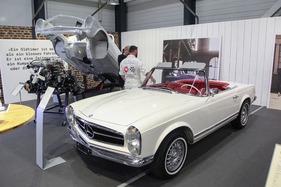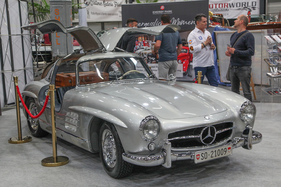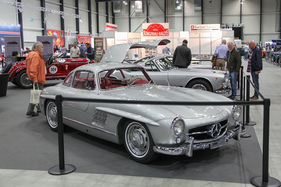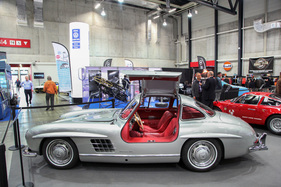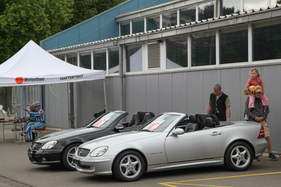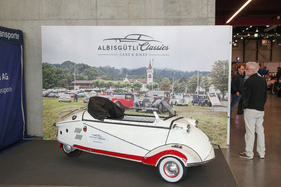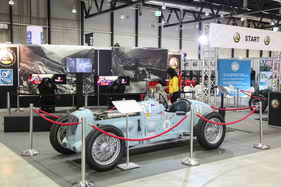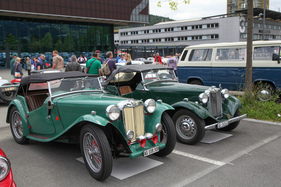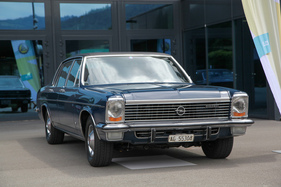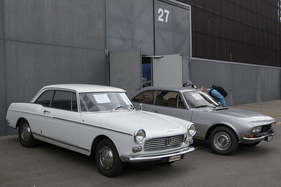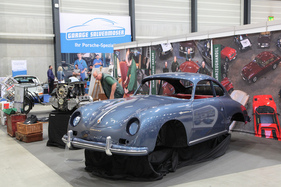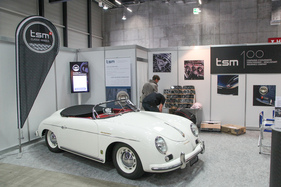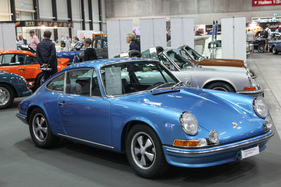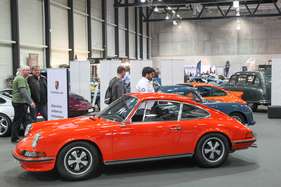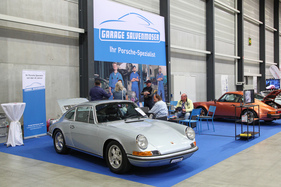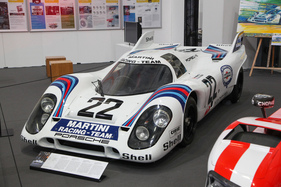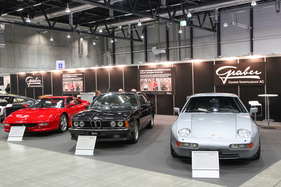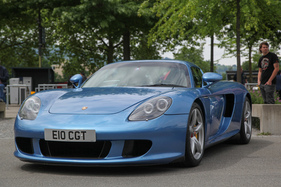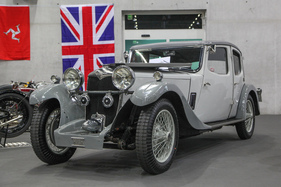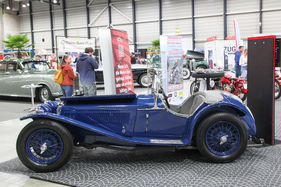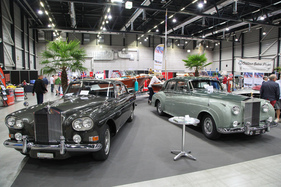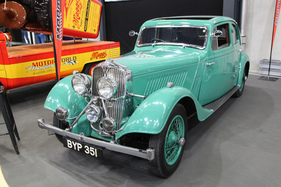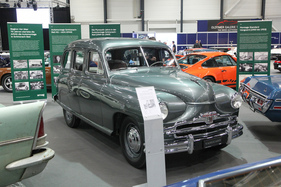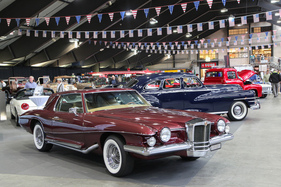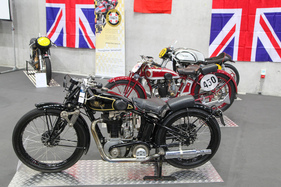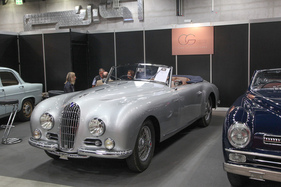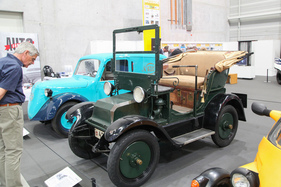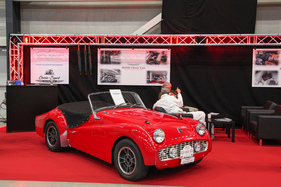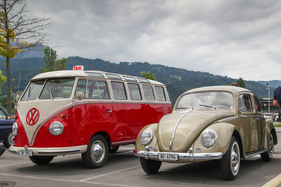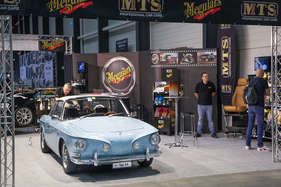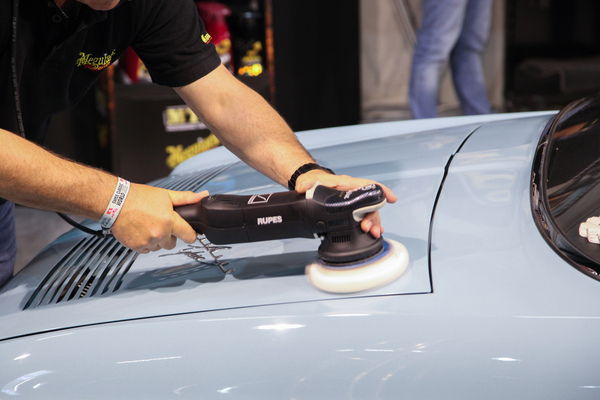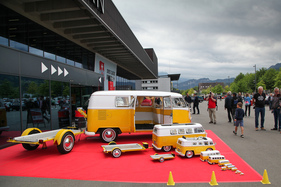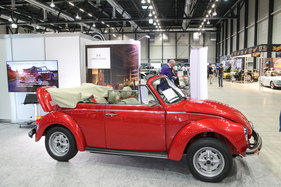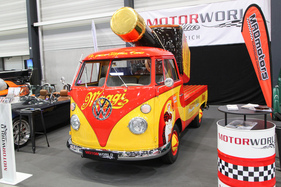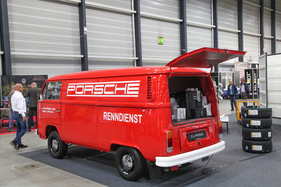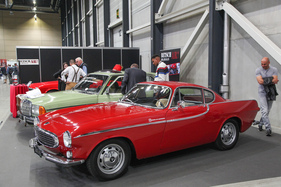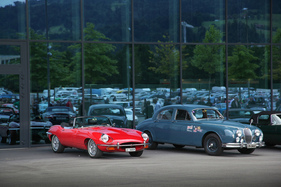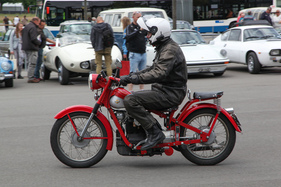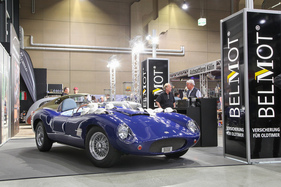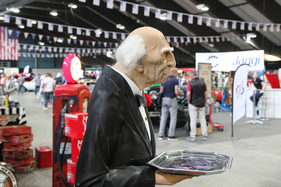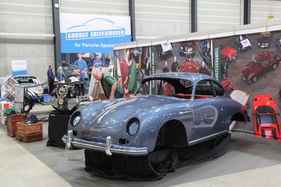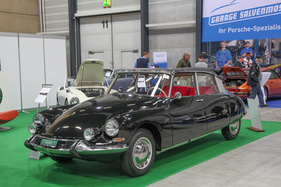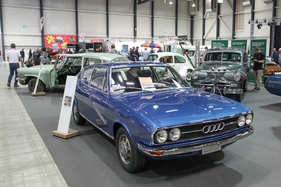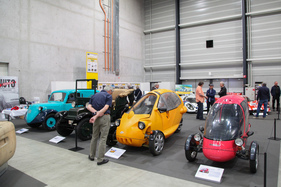After an unscheduled date in October last year, Swiss Classic World Lucerne was able to return to its usual date at the end of May this season, meaning that after just six months, Messe Lucerne has already reopened its doors to Switzerland's largest classic car fair. The eighth edition took place from May 27 to 29, 2022. Over 200 exhibitors presented themselves and their services to almost 14,000 visitors.
Half cars and whole bottles
Visitors arriving by classic car had their own parking space in front of the exhibition grounds, where a small and colorful "special show" quickly developed. VW Beetle, Datsun 260 Z, MGA, Citroën DS, Ford Mustang and Co. complemented the traditionally rather high-caliber content of the four exhibition halls well and rounded it off "downwards". Although, of course, the Iso Lele and Alpine A 110 were also among the exotic cars on show. Only a few brand clubs, whose members were allowed to park on the forecourt right next to the entrance, were allowed to get even closer.
In the two main exhibition halls 1 and 2, visitors were more likely to come across the more expensive exhibits. The Pantheon Oldtimer Garage, for example, showed a still half-finished but very rare Porsche 356 European from 1956, which is currently being restored and already shone again in fresh "aquamarine metallic". The Jaguar E-Type at restorer Dönni Classic Car still has its repainting ahead of it and presented itself only welded and sanded, but already with fresh chrome parts. The Cougar on the Belmot stand next door was complete and ready to drive.
The curiosity of the hall, however, was a VW T1 flatbed truck on the Motorworld stand, which had a gigantic bottle of Maggi seasoning on board. Unfortunately, there was no correspondingly large breakfast egg to be found anywhere at the trade fair. The unloaded, turquoise Rover Speed 14 on the neighboring Mad Motors stand at least competed with the VW in terms of color.
At the trade fair price
While some exhibitors used their cars primarily for decoration and staging, other stands were of course also intended to sell them. Goodtimer offered a rather unusual Citroën ID Cabriolet, for which, for once, Henri Chapron was not responsible. The French coachbuilder AEAT had transformed the 1964 ID 19 Prestige into a parade-ready roll-top saloon in which, according to the sales board, Charles de Gaulle had already been chauffeured. However, the pricing was sometimes quite ambitious, as demonstrated by an early Alfa Romeo 1600 Spider for just under 100,000 francs, which, however, never found a new owner.
The Mercedes-Benz 300 SL, which Lutziger Classic Cars was able to sell in Hall 2 for a seven-figure sum in Swiss francs, proved that one or two visitors were able to pay fifteen times as much for the right car. The silver coupé had tough competition on its own stand in the form of a Maserati 3500 GT Spider Vignale and a Lamborghini 350 GT - both also in metallic silver.

The two Porsche 928s from Graber Sportgarage also wore the fashionable color of the nineties. The 1970s ensemble of the 911 T, 911 S and Carrera RS at the Porsche Classic Zurich stand had a much brighter look typical of the era. Fortunately, the two Stuttgart brands were nowhere near as omnipresent and over-represented in Lucerne as elsewhere. This left more room for the unusual, such as a completely worn-out 1957 Chrysler Windsor and a Standard Vanguard Estate, which AMAG Classic presented together with other cars assembled in Switzerland.
There was also a beautiful Audi 100 Coupé S, whose dark blue metallic paint would have harmonized beautifully with the grapefruit yellow Audi TT from Autowelt Bachmann - if they hadn't been standing in two different corners of the hall. So the TT had to share the stand with an Audi 100 CD in light green metallic.

Emil Frey Classics, on the other hand, was dominated by the color red, which adorned the Jaguar E-Type, Austin-Healey 100 and Jaguar XJ-S in various shades. The Lancia Fulvia HF on the Franks Originale stand, on the other hand, wore innocent white instead of the traditional Italian racing color. At least the Alfa Romeo 2600 Spider by Charles Menetrey showed a little national pride in this respect in Hall 2.
Low prices preferred
The front of the hall was reserved for the Oldtimer-Galerie Toffen, which had set up the stage for its auction on Saturday afternoon. Around two thirds of the 41 cars on offer were sold. We have already published a detailed review of the auction here . The bargain of the evening was a Lancia Flaminia Coupé, which changed hands for just over half the estimated price. The most expensive car was a 1941 Cadillac Series 62 Convertible Coupe, which sold for 106,400 francs including buyer's premium. The very expensive lots seemed to attract slightly less bidding than the cheaper vehicles.
The marketplace for private vehicle sellers was located between Halls 2 and 3. Here - as in the visitor parking lot - there was the greatest diversity. There was keen interest in an Austin Seven Pearl from 1935. After all, it showed that the days of the cozy puffball are not quite over yet. Symbolic of the diversity was a Porsche 928 right next to the pre-war Austin, whose Japanese counterpart was also available in the form of a Subaru SVX, as well as the English-Japanese twins MGC and Datsun 1600 Sport. Even one of only 400 De Tomaso Mangusta cars had mingled with the "pedestrians".

Handy parts market
Hall 3 contained the trade fair's parts market, which consisted largely of old and new model cars. Between 60-year-old Dinky Toys and Matchbox models in mint condition, complete with original boxes, you sometimes had the feeling of standing in a toy store from days gone by - only the prices were no longer quite pocket-money friendly. Of course, there were also spare parts for life-size cars, but more in the format of breaker contacts and rear lights than entire mudguards or rear axles. The only 1:1 scale car in Hall 3 was a 1932 Buick Roadster at the Wagenschmitte stand.

Hall 4 traditionally contained the US classics alongside other parts stands. A Stutz Blackhawk and a last-generation Ford Thunderbird stood out among the Ford Mustang and Chevrolet Corvette.
Not for sale
The Porsche 917 with the white Martini livery, with which Gijs van Lennep and Helmut Marko won the 24 Hours of Le Mans in 1971, was hidden away in the rear right-hand corner of Hall 1 and thus sold well below its value. At least its modern successor - the red 919 Hybrid, in which Timo Bernhard, Mark Webber and Brendon Hartley finished second in 2015 - gave it the lead by positioning itself a little further back.
The view of the 917 was blocked by four Swiss-made electric cars. A Horlacher egg from the 1980s proved that the economy cars of the time had no need to hide from their modern descendants in terms of energy consumption.
Organizers and visitors alike were satisfied with the first Lucerne trade fair under "normal" conditions in three years. There is only one drawback: it will now be a whole year before the next Swiss Classic World.
